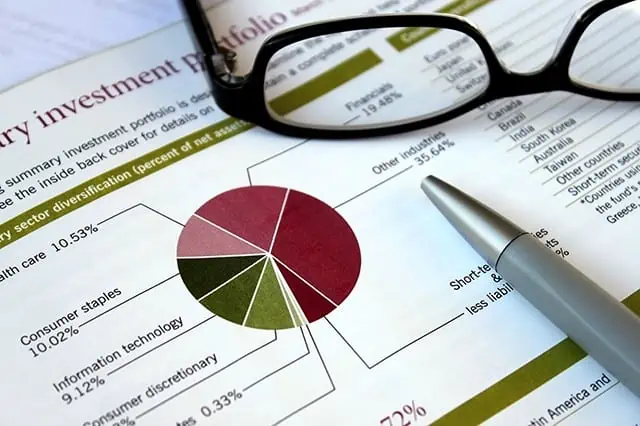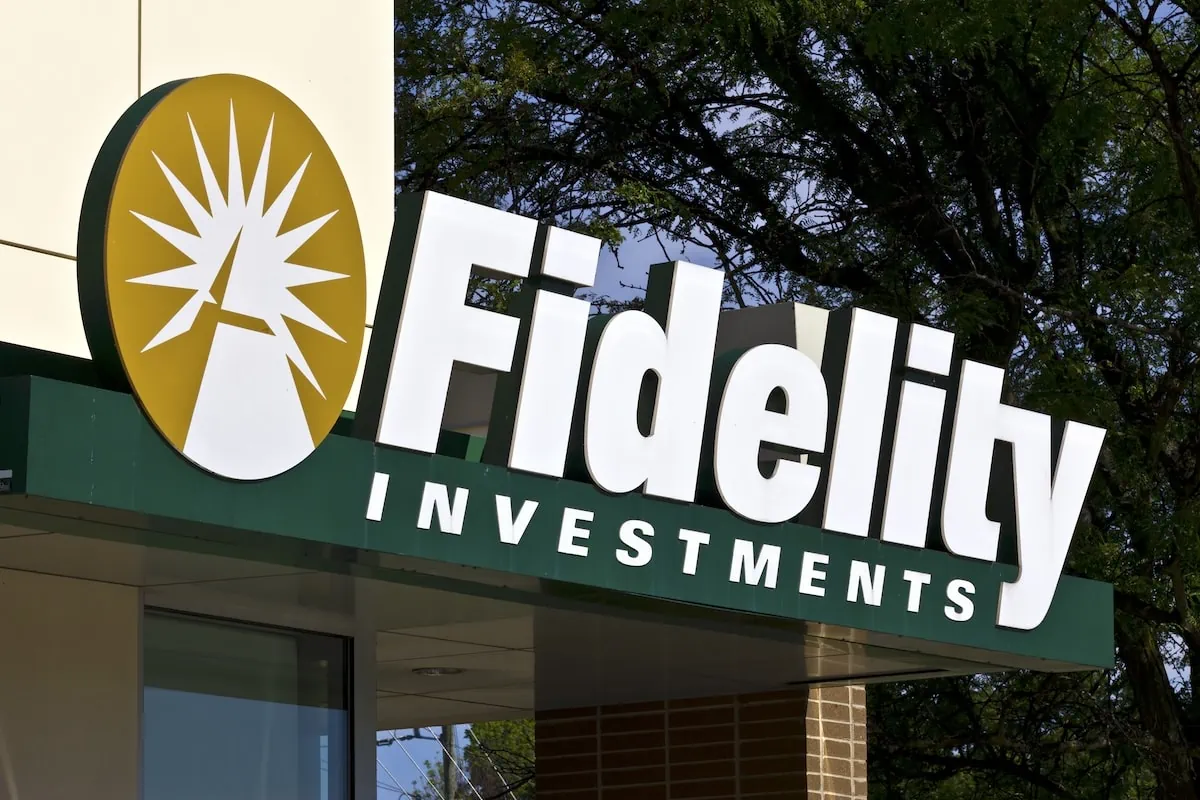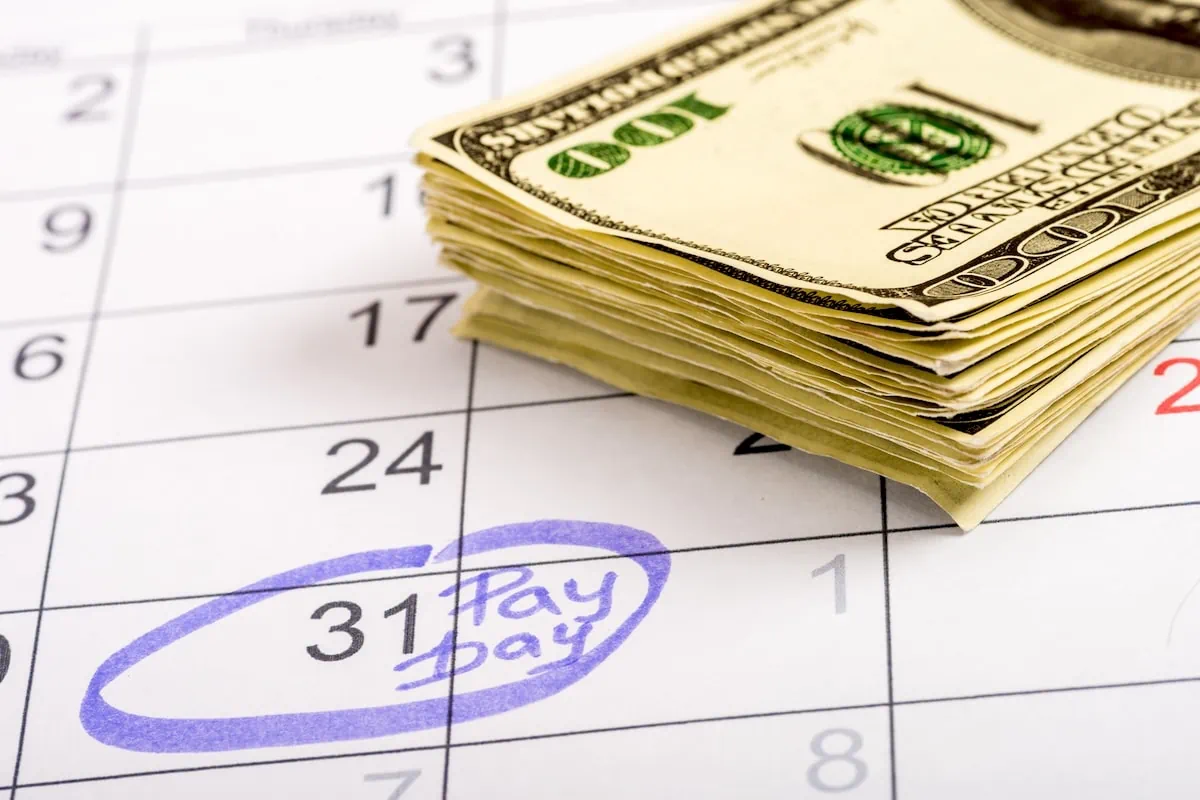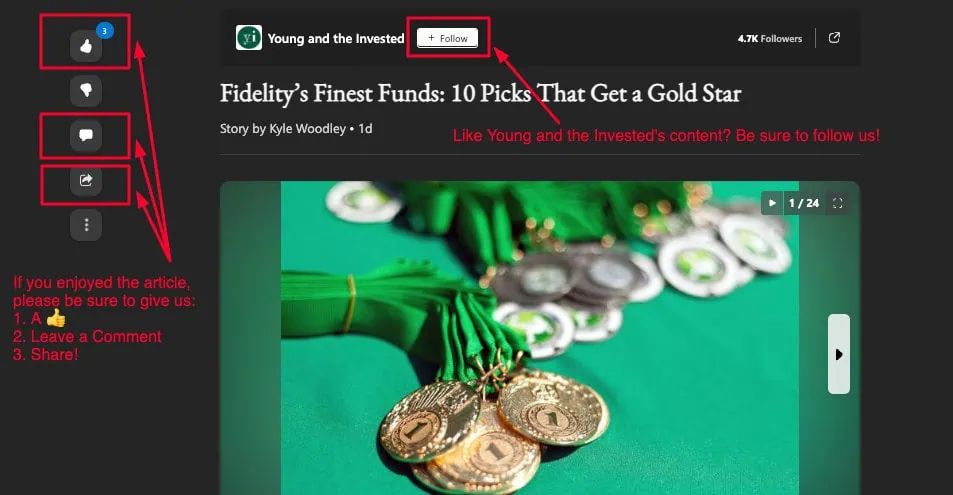Closed-end funds (CEFs), though less well-known than mutual funds and ETFs, have long been integral to income-focused portfolios. Easily accessible through most brokerage accounts and IRAs, they often offer appealing yields and the potential for robust trading gains when strategically purchased.
CEFs provide a diverse range of investment options, covering nearly every asset class imaginable. These include not only stocks and corporate bonds but also tax-exempt municipal bonds and a variety of other assets, even those considered illiquid and challenging to include in conventional mutual funds.
But what exactly is a closed-end fund, and how do you know what constitutes a good one? Today, we’re going to break down this market niche, then we’ll present you with seven of the top closed-end funds to know for 2024.
Disclaimer: This article does not constitute individualized investment advice. These funds appear for your consideration and not as investment recommendations. Act at your own discretion.
Editor’s Note: The tabular data presented in this article is up-to-date as of August 31, 2024.
Table of Contents
What Is a Closed-End Fund?

A closed-end fund is a special type of fund that shares certain things in common with their cousins: traditional open-end mutual funds and exchange-traded funds (ETFs).
But there are also critical differences that make CEFs very different from both.
CEFs vs. Mutual Funds vs. ETFs

CEFs are best understood by comparing them to the competition.
You’re likely very familiar with open-end mutual funds, which are the investment vehicle of choice for 401(k)s and other retirement plans. But you may not actually understand how they work.
When you invest in an open end mutual fund, you (or your broker) actually sends cash to the fund, which the manager then uses to buy stocks, bonds or other securities. And when you redeem, the mutual fund manager will send you or your broker the cash, even selling securities to free it up if need be.
Exchange-traded funds are different. Investors can buy or sell ETFs exactly as they would any stock. They trade on major stock exchanges.
Unlike mutual funds, you don’t actually send the manager money. New ETF shares can be created or destroyed by institutional investors based on market demand. (When shares are created, an institutional investor will essentially buy up the shares of stocks and bonds owned by the ETF, then trade them to the fund for shares of the ETF itself. When shares are destroyed, the institutional investor receives the underlying holdings.)
This creation and destruction of new ETF shares ensures that the ETF’s market price never deviates too far from the net asset value (NAV), or the value of the underlying holds.
And this brings us to CEFs.
CEFs Pool Funds From Several Investors

Like open-end mutual funds and exchange-traded funds, closed-end funds are pooled investment vehicles. You have many investors pooling their assets into a common fund, which is invested by a manager or a team of managers. (And while mutual funds and ETFs can be index funds, which are rules-based and effectively run by computers, all CEFs are actively managed.)
Unlike mutual funds—but like exchange-traded funds—closed-end funds trade on a stock exchange. You buy the shares in a brokerage account and never send the manager cash.
Because ETFs and CEFs don’t have to meet redemptions like open-end mutual funds, liquidity is less of an issue. They can hold thinly traded or illiquid securities without having to worry about selling them due to a wave of redemptions.
But unlike exchange-traded funds, closed-end funds have no creation or destruction of shares. A CEF actually holds an initial public offering (IPO) when it creates its shares, and that number of shares is fixed. That might sound like a mundane detail, but it’s actually one of the most important aspects of CEFs. Here’s why:
1. Net Asset Value

Net asset value is the value of a fund’s net asset position (the value of the stocks, bonds, and other securities it owns minus any liabilities) divided by the number of shares outstanding.
Open-end mutual funds are always valued at their net asset value. And with exchange-traded funds, the shares’ net asset value will never deviate too much from the market price due to the creation and destruction mechanism. But because CEFs have no such mechanism, the market price of the shares can vary wildly from the net asset value. They can trade at large premiums to net assets or—benefiting us—at deep discounts.
Many closed-end fund investors prefer to buy CEFs when they are trading at deep discounts to net asset value. Why not? It’s intuitively appealing to buy that proverbial dollar for 95 cents.
2. Leverage

Leverage is finance-speak for borrowing money to invest. This can boost returns, but it also increases risk. If you own a home, you know how this works. An increase or decrease in property value has an outsized impact on your home equity.
Closed-end funds will generally employ at least a modest amount of leverage, though it is not uncommon for a CEF to be leveraged as much as 30% to 40%. Of course, CEFs generally don’t “borrow on margin” like regular mom-and-pop investors. They generally have access to more sophisticated—and cheaper—funding options.
This leverage is a major reason that CEFs are able to generate some of the highest yields in the entire stock market. But it comes with risks. The same leverage that boosts returns when assets are rising compounds the losses when assets are falling. Furthermore, many CEFs tend to borrow at (normally) cheaper short-term rates and invest the proceeds in longer-term assets. That strategy is most profitable when the yield curve is steep (long-term rates are much higher than short-term rates), but it can be difficult to navigate when the yield curve is inverted (when short-term rates are higher than long-term rates), as it has been since mid-2022.
When evaluating closed-end funds, you will want to take the leverage into consideration.
3. Distributions

The majority of closed-end funds are income funds. Whether they are fixed-income closed-end funds (bonds) or equity closed-end funds (stocks), chances are good that income is a major investment objective, and CEFs tend to offer high yields.
CEFs generally do not pay taxes at the fund level so long as they distribute 90% or more of their dividend and interest income, and 98% of their realized capital gains. This tax incentive is another factor in the outsized payouts we see in this space.
Closed-end funds’ payouts are referred to as distributions. CEF distributions will generally come from some combination of four sources:
1. Interest on fixed income or other interest-bearing securities
2. Dividends from stocks
3. Realized capital gains
4. Return of capital
That last item needs a little explaining. A return of capital can be “constructive,” in that the proceeds represent unrealized capital gains and don’t erode the value of the fund. Or they can be “destructive” in that the fund is simply giving investors their own money back.
Even destructive return of capital isn’t necessarily destructive nor nefarious. CEFs will often smooth out their distributions to give their investors an even income stream, and sometimes this might mean distributing more than current earnings would support. If it is temporary, it’s generally not a problem. But keep an eye out for it. If return of capital makes up a large proportion of the CEF’s distribution, they might need to cut the distribution in the not-too-distant future.
A Note on How Distributions Affect Taxes

The varied mix of income sources mean that your distributions will be taxed at different rates, all of which will be broken down on the 1099 you receive from your broker.
In the case of municipal bond CEFs, the vast majority of your distribution will be classified as tax-free. You would only have taxable income if the fund sold bonds and generated realized capital gains, in which case you would owe taxes at the short- or long-term capital gains tax rate. And any return of capital would lower your cost basis, thus setting you up for capital gains in the future when you eventually sell your shares.
For taxable CEFs, your distribution will be a mixture of dividends, ordinary income (interest) and short and long-term capital gains. As with tax-free muni funds, in the event of return of capital you will also have a lower cost basis, which will come into play when you eventually sell.
Related: 7 Best High-Dividend ETFs for Income-Minded Investors
Top Closed-End Funds You Can Buy

With that as background, let’s now take a look at the best closed-end funds to buy in 2024.
As with any investment strategy, diversification is critically important. So, we’re going to cover a variety of CEFs, including both equity closed-end funds and fixed-income closed-end funds.
Like Young and the Invested’s Content? Be sure to follow us.
1. Eaton Vance Municipal Income 2028 Term Trust

— Type: Tax-free municipal bond
— Assets under management: $205.2 million
— Expense ratio: 1.04%, or $10.40 per year on $1,000 invested
— Distribution rate: 5.0%
Let’s start with a good tax-free municipal bond CEF, the Eaton Vance Municipal Income 2028 Term Trust (ETX).
ETX is a special type of closed-in fund called a “term fund.” This simply means the CEF has a shelf life, and at the end of that life it will liquidate and return its cash to shareholders. ETX intends to cease its investment operations on or about June 30, 2028, giving us a little over four years.
Related: 5 Best Fidelity Retirement Funds [Low-Cost + Long-Term]
You might be wondering why the fund would choose to liquidate, and the answer is simple. Closed-end funds often trade at discounts to net asset value. That might seem good: After all, value investors buy underappreciated assets, waiting for them to improve in price as other investors realize their worth. But in the absence of a catalyst, discounted CEFs can stay at a discount forever.
That’s where term funds come into play. Term funds liquidate at net asset value. That means that, as the CEF approaches the end of its term, the discount should naturally close. This gives investors a degree of safety that doesn’t exist in traditional closed-end funds.
At current prices, ETX trades at a 0.4% discount to net asset value. That’s not huge by CEF standards, but term funds generally trade at smaller discounts than the CEF average. And at current prices, ETX yields a tax-free 5.0%. If you’re in the 37% tax bracket, that’s equivalent to a 7.9% taxable yield. Not too shabby, even in this interest-rate environment.
Related: 5 Best Vanguard Retirement Funds [Start Saving in 2024]
2. BlackRock 2037 Municipal Target Term Trust

— Type: Tax-free municipal bond
— Assets under management: $160.9 million
— Expense ratio: 0.72%, or $7.20 per year on $1,000 invested
— Distribution rate: 4.4%
Let’s take a look at another term fund—one that still has a good 13 years left in it: the BlackRock 2037 Municipal Target Term Trust (BMN).
Target term funds are slightly different than term funds. A term fund simply liquidates at a fixed point in the future. A target term fund liquidates at a fixed point in the future and at a targeted price. BMN’s objective is to liquidate on or around Sept. 30, 2037, and return exactly $25 per share. (For reference, BMN trades at $25.31 as I write this.)
That $25 is not guaranteed, of course. And there is no promise the managers will be successful in getting there. But that is their goal, and it’s relatively simple to structure a bond portfolio so that it matures on a specific date with a known par value.
Related: 11 Best Alternative Investments [Options to Consider]
At current prices, BMN trades at a sizable 3.3% discount to net asset value and yields 4.4%. Assuming a 37% tax bracket, that’s a 7.1% tax-equivalent yield.
BMN is a relatively new fund, having launched in late October 2022. The timing couldn’t have been better, as the fund was building out its portfolio just as long-term yields were hitting multi-year highs. What better time to start than when yields are high and prices are low?
Related: 12 Best Investment Opportunities for Accredited Investors
3. BlackRock Floating Rate Income Trust

— Type: Floating-rate income
— Assets under management: $282.7 million
— Expense ratio: 3.03%, or $30.30 per year on $1,000 invested
— Distribution rate: 11.4%
Bond yields surged higher for most of 2022 and 2023, which wreaked havoc on many fixed-income portfolios. (The math on bonds is simple: If bond yields go up, then prices come down, and vice versa.)
One way to minimize this seesaw effect is to focus on floating-rate securities. These bonds have regular resets that tie the coupon payment to prevailing market interest rates. So, as market yields rise, so does your payout.
Related: The 7 Best Dividend ETFs [Get Income + Diversify]
The flipside, of course, is that falling yields mean a smaller payout. So, the degree to which you want to own floating rate securities ultimately comes down to what direction you expect interest rates to trend. But regardless, having at least a little exposure to floating rates makes sense, if for no other reason than to offer diversification.
One solid option is the BlackRock Floating Rate Income Trust’s (BGT). BGT is required to invest at least 80% of its assets in floating- and variable-rate instruments. The average effective duration of its portfolio is not expected to be more than 1.5 years. In plain English, that means that a 1% rise in market interest rates would translate to just about 1.5% in capital losses, or a 1% drop in market interest rates would translate to about 1.5% in capital gains. And remember, that is the maximum. The current effective duration at time of writing is just 0.24 years, meaning a move in market interest rates should have a negligible effect of BGT’s share price.
Related: 5 Best Vanguard Dividend Funds [Low-Cost Income]
In other words, don’t expect this CEF to get whipped around if we continue to see volatility in the bond market.
At current prices, BGT trades just above its NAV, meaning you’re buying its assets for about 100¢ on the dollar (no premium or discount). On top of that, it yields a very attractive 11.4%.
Related: The 7 Best Vanguard Index Funds for Beginners
4. BlackRock Enhanced Equity Dividend Trust

— Type: Equity covered calls
— Assets under management: $1.7 billion
— Expense ratio: 0.86%, or $8.60 per year on $1,000 invested
— Distribution rate: 7.9%
Covered call writing has always been a popular strategy for income investors. In a covered call trade, you write—or sell—options against a stock position you own, collecting the option premium as income.
Related: 10 Best Dividend Stocks to Buy [Steady Eddies]
For example, let’s say you own 100 shares of Microsoft (MSFT) currently trading around $420. You could sell a call option that expires in a month at a strike price of $445.
If, a month from now, Microsoft is trading below $420, that’s great. The option expires worthless and you keep the premium from the original sale.
But let’s say that Microsoft enjoys a nice run and blasts higher to $455. What happens now? The person you sold the call option to has the right to buy the Microsoft shares from you for $445 per share. No problem. You missed out on a little upside, but you still sold at a profit and you still get to keep the premium from the option you sold. Not a bad deal.
If you’d like to have a pro handle all of this for you, consider the BlackRock Enhanced Equity Dividend Trust (BDJ). The fund holds a diversified basket of dividend paying stocks and then further enhances the income by writing covered calls on them.
At current prices, BDJ trades at a substantial 9.2% discount to net asset value and yields a whopping 7.9%.
Related: 13 Dividend Kings for Royally Resilient Income
5. Tortoise Energy Infrastructure Corp.

— Type: Energy infrastructure
— Assets under management: $449.8 million
— Expense ratio: 3.04%, or $30.40 per year on $1,000 invested
— Distribution rate: 8.7%
If you are looking for income, energy infrastructure should be one of the first places you look.
Oil-and-gas pipeline stocks offer some of the highest yields in the entire stock market. Some of this is due to their unique tax structure. Because of their high non-cash depreciation expenses, pipeline stocks tend to pay comparatively little in taxes. And the pipeline stocks organized as master limited partnerships (MLPs) pay no company income taxes at all so long as they distribute at least 90% of their profits as distributions.
Related: 7 Best High-Dividend ETFs for Income-Minded Investors
One of the major downsides to owning MLPs is the tax reporting, though. The annual K-1 tax forms can be a real bear to deal with, even for experienced tax preparers.
This is where an MLP closed-end fund can really add value. You get a diversified basket of quality pipeline stocks without the tax hassle of owning the stocks outright.
There are several energy infrastructure CEFs out there, but one in particular I like is the Tortoise Energy Infrastructure Corp (TYG). The fund owns a diversified basket of MLPs and corporate pipeline stocks with the majority of the portfolio invested in natural gas infrastructure.
Related: 7 High-Quality, High-Yield Dividend Stocks
America’s energy grid is getting greener every day as renewable energy in wind and solar gain market share. But natural gas is still a critical and growing piece of America’s energy grid and likely will be for the rest of our lifetimes.
At current prices, the fund trades at a massive 14.4% discount to net asset value and yields a competitive 8.7%.
Related: Best Vanguard Retirement Funds for a 401(k) Plan
6. Neuberger Real Estate Securities Income Fund

— Type: REITs and preferred stock
— Assets under management: $183.7 million
— Expense ratio: 2.06%, or $20.60 per year on $1,000 invested
— Distribution rate: 9.8%
The past two years have been rough for real estate investment trusts (REITs). Because REITs have always had a major emphasis on income, investors came to view them as a bond substitute over the past 20 years. But when bond yields started to surge higher again, bond prices collapsed and REIT prices also fell in sympathy.
Have bond yields topped out? Likely, but that still remains to be seen. But either way, REITs could mount a strong recovery. If yields fall—and bond prices rise—then REIT prices should also benefit. If inflation proves to be stubborn and yields remain high, REITs should be in a better position than they were a year ago, as the rents they collect from tenants should also trend higher in line with inflation.
One way to play a recovery in REITs is via the Neuberger Real Estate Securities Income Fund (NRO). The CEF has about 64% of its portfolio in REIT common shares and another 36% in REIT preferred shares (high-yield “hybrid” securities that have features of both stocks and bonds).
If you believe that REITs are attractive, NRO is a solid option. It yields a massive 9.8% at current prices and trades at a moderate 1.1% discount to NAV.
Related: 5 Best Vanguard Dividend Funds [Low-Cost Income]
7. Gabelli Dividend & Income Fund

— Type: Large-cap stock
— Assets under management: $2.5 billion
— Expense ratio: 1.36%, or $13.60 per year on $1,000 invested
— Distribution rate: 5.5%
For one final equity closed-end fund, consider the Gabelli Dividend & Income Trust (GDV). Founded by legendary growth investor Mario Gabelli, GDV has been up and running since 2003. GDV is required to invest at least 80% of its assets in dividend paying or other income-producing securities, though yield is not the only consideration—the fund also looks for capital gain potential.
While the fund invests globally, the U.S. accounts for the bulk of its portfolio at a little over 80%. Its largest holdings are Mastercard (MA), JPMorgan Chase (JPM), and Microsoft. Furthermore, while the fund looks for dividend-paying stocks, it doesn’t necessarily look for ultra-high yielders. So, you can think of the Gabelli fund as a growth-oriented stock fund that also happens to throw off a lot of income.
Related: The 9 Best Dividend Stocks for Beginners
At current prices, the fund trades at a gargantuan 14.7% discount to net asset value and yields an attractive 5.5%.
Historically, it is rare for GDV to remain at a discount to NAV of this size. Whenever the discount has gotten close to 15%, it has generally reversed to 5% to 10% in fairly short order.
Like Young and the Invested’s Content? Be sure to follow us.
Related: 15 Best Investing Research & Stock Analysis Websites

Being a discerning investor is, for better or worse, all about the homework. If you’re “doing it right,” you’re culling through useful information regularly on stock analysis websites, stock news apps, research reports and other valuable information.
Being data-driven investors ourselves, we love these kinds of tools. So let us share with you our favorite investment research software, stock research websites and informational apps.
Related: 12 Best Long-Term Stocks to Buy and Hold Forever

As even novice investors probably know, funds—whether they’re mutual funds or exchange-traded funds (ETFs)—are the simplest and easiest ways to invest in the stock market. But the best long-term stocks also offer many investors a way to stay “invested” intellectually—by following companies they believe in. They also provide investors with the potential for outperformance.
So if you’re looking for a starting point for your own portfolio, look no further. Check out our list of the best long-term stocks for buy-and-hold investors.
Related: The Best Fidelity ETFs for 2024 [Invest Tactically]

If you’re looking to build a diversified, low-cost portfolio of funds, Fidelity’s got a great lineup of ETFs that you need to see.
In addition to the greatest hits offered by most fund providers (e.g., S&P 500 index fund, total market index funds, and the like), they also offer specific funds that cover very niche investment ideas you might want to explore.
Related: 9 Best Monthly Dividend Stocks for Frequent, Regular Income

The vast majority of American dividend stocks pay regular, reliable payouts—and they do so at a more frequent clip (quarterly) than dividend stocks in most other countries (typically every six months or year).
Still, if you’ve ever thought to yourself, “it’d sure be nice to collect these dividends more often,” you don’t have to look far. While they’re not terribly common, American exchanges boast dozens of monthly dividend stocks.
Please Don’t Forget to Like, Follow and Comment

Did you find this article helpful? We’d love to hear your thoughts! Leave a comment with the box on the left-hand side of the screen and share your thoughts.
Also, do you want to stay up-to-date on our latest content?
1. Follow us by clicking the [+ Follow] button above,
2. Subscribe to The Weekend Tea, our weekly newsletter to read more about investing, spending, taxes, and more, and
3. Give the article a Thumbs Up on the top-left side of the screen.
4. And lastly, if you think this information would benefit your friends and family, don’t hesitate to share it with them!





